Search
00684 TITANIUM - PROVEN PERFORMANCE IN HYDROCARBON PROCESSING
Also Purchased
00691 EXPERIENCE WITH TITANIUM HEAT EXCHANGERS IN REFINERY SERVICES
Product Number:
51300-00691-SG
ISBN:
00691 2000 CP
Publication Date:
2000
$20.00
09078 Experience with Titanium Alloys for Oil and Gas Service
Product Number:
51300-09078-SG
ISBN:
09078 2009 CP
Publication Date:
2009
$20.00
07183 Corrosion Performance of Titanium Grade 38
Product Number:
51300-07183-SG
ISBN:
07183 2007 CP
Publication Date:
2007
$20.00
Recently viewed




